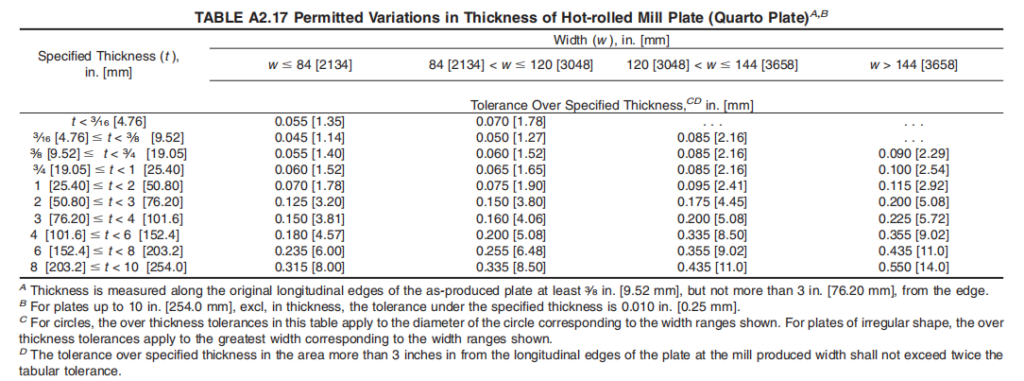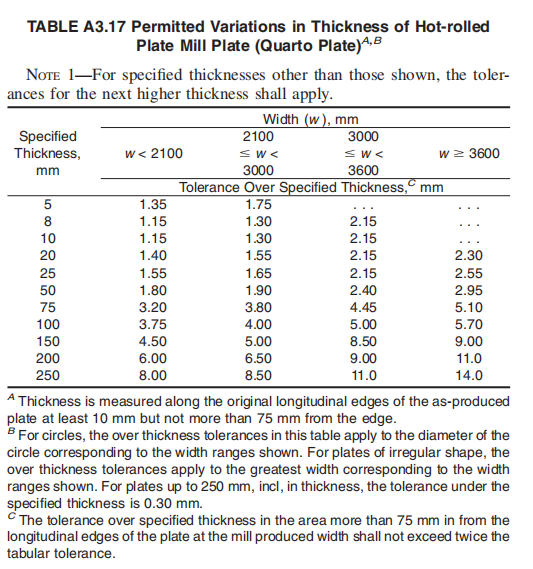1.0 Scope
1.1 This specification is for seamless 4140 API 5CT chromium-molybdenum low alloy steels in quenched and tempered condition with 110 ksi MYS.
1.2 Material is to conform to the requirements of NACE MR0175 (ISO 15156-2) and is resistant to Sulfide Stress Cracking (SSC) in H2S containing environments.
2.0 Chemistry
2.1 Composition of material supplied shall conform to the following limits. Reported results
must include the results of quantitative determinations of all elements listed, plus all elements used to control mechanical properties.
Element Symbol Min Max
Carbon C 0.38 0.43
Manganese Mn 0.75 1.00
Phosphorus P – 0.025
Sulfur S – 0.025
Silicon Si 0.15 0.35
Chromium Cr 0.80 1.10
Nickel Ni – 0.25
Molybdenum Mo 0.15 0.25
Copper Cu – 0.35
2.2 Material shall also meet to minimum ideal diameter (DI) 5.40 by controlling the chemistry to ensure hardenability.
2.3 Composition testing shall be performed in accordance to ASTM A751 or any procedure used to determine composition of steels which provides equivalent results per ASTM A751.
3.0 Mechanical Properties
3.1 Mechanical properties of material shall conform to the following requirements per ASTM A370 latest revision. Test specimen shall be determined from a prolongation removed only after final heat treatment.
Minimum Ultimate Tensile Strength 125 ksi (862 MPa)
Minimum Yield Strength (0.5% extension under load) 110 – 140 ksi (758 – 965 MPa)
Minimum Elongation to Fracture 13%
Minimum Reduction of Area 40%
Surface Hardness 30 – 33 HRC (285-311 HB)
Minimum As-Quenched Hardness 45 HRC
Charpy V-Notch Impact Strength
At 0°C (32°F)
Minimum Average Value – Transverse 41 J
Minimum Average Value – Longitudinal 41 J
3.2 All tensile testing shall be tested on round specimen machined from mid-radius or full wall
longitudinal strip specimen. This specification will require 2 tests to be done per heat.
Gauge length and specimen cross section dimensions must be reported.
3.3 Hardness test should be performed using Brinell or Rockwell hardness testing which
conform to ASTM E10 or E18. Hardness is required to be measured at material’s surface and also to performed quadrant hardness test. For quadrant hardness test, unmachined outer diameter of material is required to have 1/16” removed off by grinding or buffing to produce a flat surface testing area. ASTM E140 hardness conversion table shall be used when converting between scales.
This specification will require 2 quadrant hardness test to be done per heat. Quadrant testing shall be done in three locations of each quadrant, ie near the outer diameter, midwall and near the inner diameter. A through-wall hardness test is comprised of hardness value for each location within a quadrant. The mean hardness value must meet to specification requirement.
For each size, mass, chemical composition and austenize and quench combination, a through wall hardness test is to be made after quenching and prior to tempering to confirm on sufficient hardening and this value is to be documented.
3.4 Charpy Impact Testing must conform to ASTM E23 on each heat, size and heat treat lot at temperature of 32°F (0°C) or below. The test specimens shall be from the same test piece and test locations as used for mechanical tests with minimum of three charpy test specimens to be done to constitute a charpy impact testing. Test specimen can be oriented either transverse or longitudinal. Test specimen dimension should be 10 mm x 10 mm. A test shall consist of a set of 3 specimens taken from one location from a singular tubular product length.
The average value of the three specimens must equal or exceed the specified absorbed energy requirements. Not more than one specimen shall have an absorbed energy below the absorbed energy requirements.
4.0 CONDITION
4.2 The mill is responsible for selecting appropriate austenitizing and tempering temperatures, times at temperature and suitable quench media to achieve the required mechanical properties and toughness uniformly per heat treat lot.
4.3 Materials are not to be subjected to cold work after final tempering treatment except for normal straightening operations. Pipe rotary-straightened at temperatures less than 480°C is not to contain roll marks that exceed the maximum hardness specified in 3.1.
Pipe with severe roll marks is to be rejected or stress relieved at minimum 480°C.
4.4 Materials must be free of overlays and welding. Materials are also to be stress free.
4.5 Grain size of raw materials supplied shall be 5 or finer when determined as per ASTM E112 latest revision.
4.6 All seamless pipes shall have wall thickness verified as per API 5CT requirements. All pipes must be free from any quench crack, any surface breaking imperfections that reduces wall thickness below 87.50% of specified minimum, any non-surface breaking imperfections detected with an area greater than 0.40 in2 when outline on surface and any linear imperfections of any orientation on any areas of the pipes with a depth greater than 5% of specified wall thickness.
4.7 Materials shall be full length inspected for detection of longitudinal imperfections on outside and inside surfaces to L4 level acceptance by
- a) Ultrasonic testing conform to ISO 9303 or ASTM E213
- b) Flux leakage testing conform to ISO 9402 or ASTM E570
- c) Magnetic particle inspection conform to ISO 13665 or ASTM E709
4.8 All pipes OD surfaces required magnetic particle inspection conform to ISO 13665 or ASTM E709.
4.9 All NDE must be done by qualified NDE personnel and certified to ISO 11484 or ANSI-ASNTSNT-TC-1A latest revision.
5.0 REPORTS
5.1 All materials supplied to this specification must be accompanied by Mill Test Report
which is subjected to our Quality inspection upon receipt.
5.2 Mill Test Report must be inclusive of the following:
- a) Material condition
- b) Chemical Analysis
- c) Tensile properties (including test specimens type and dimensions)
- d) Hardness test
- e) Charpy Impact Testing
- f) Number of pieces per heat treat lot
- g) Heat treat condition (including furnace times and temperature)
- h) Visual inspection result
- i) Quench media used
- j) All NDE testing results and statement of processes used
5.3 Heat number, material grade and material size shall be permanently marked on each piece of material.

